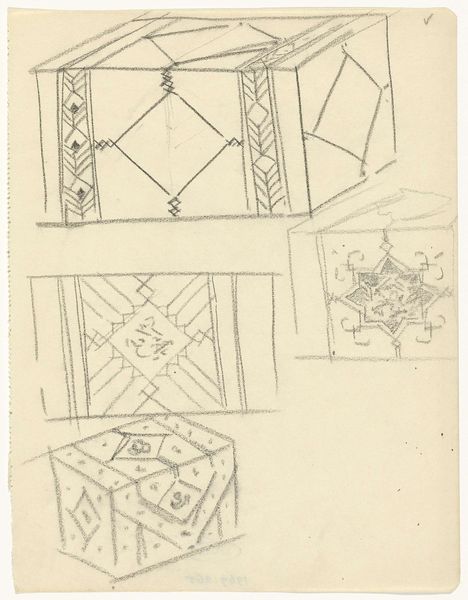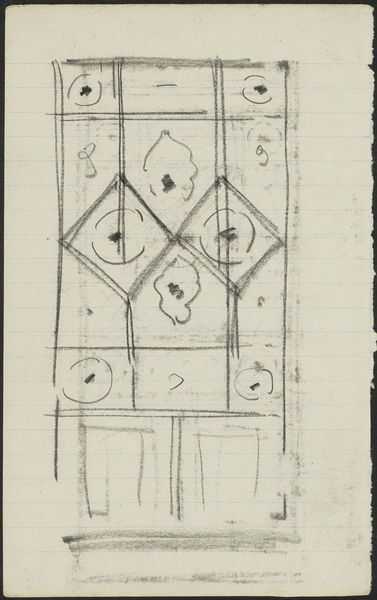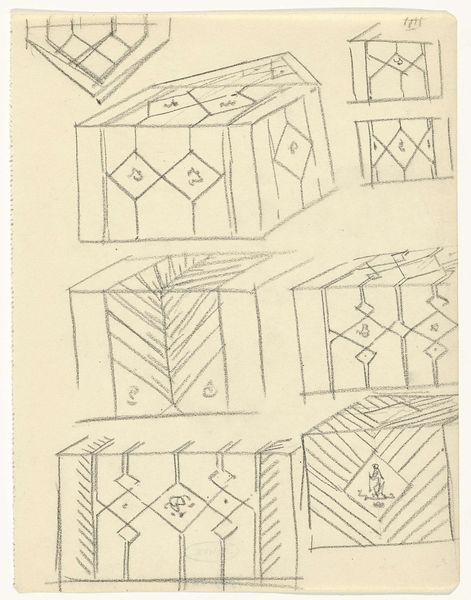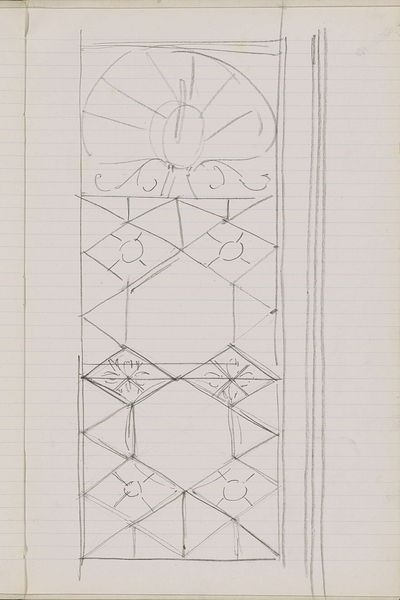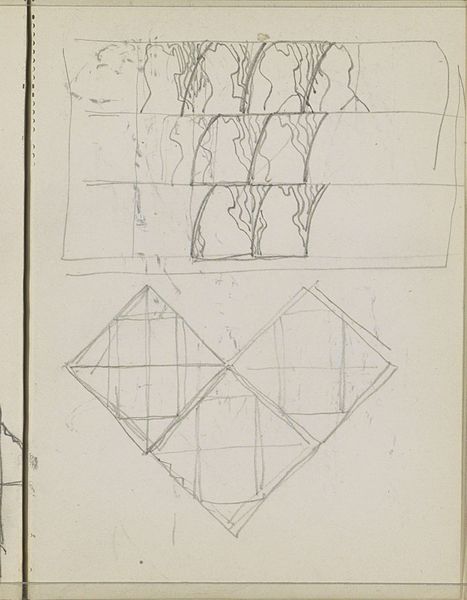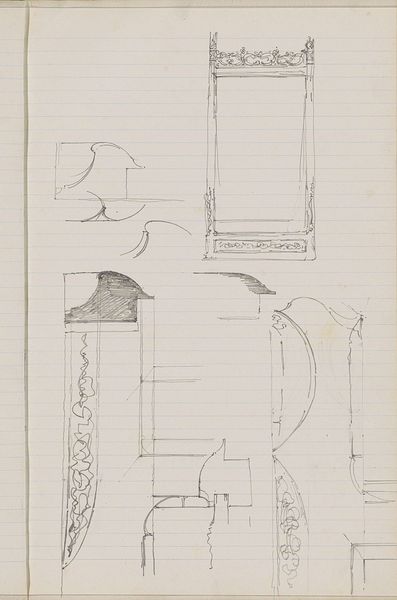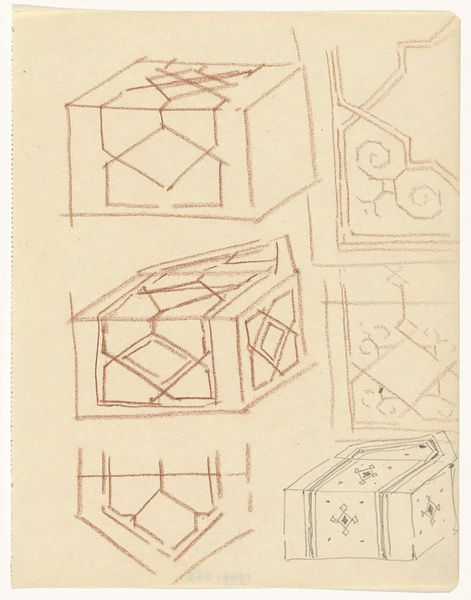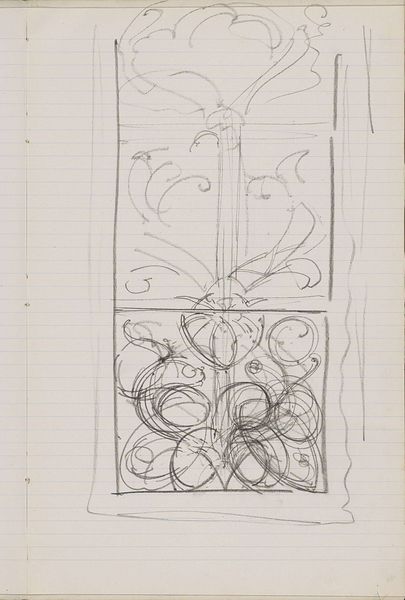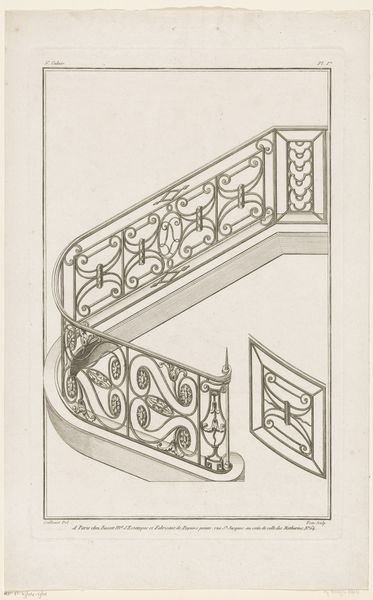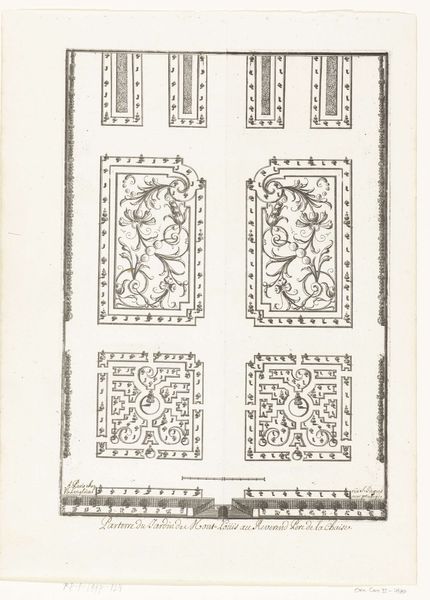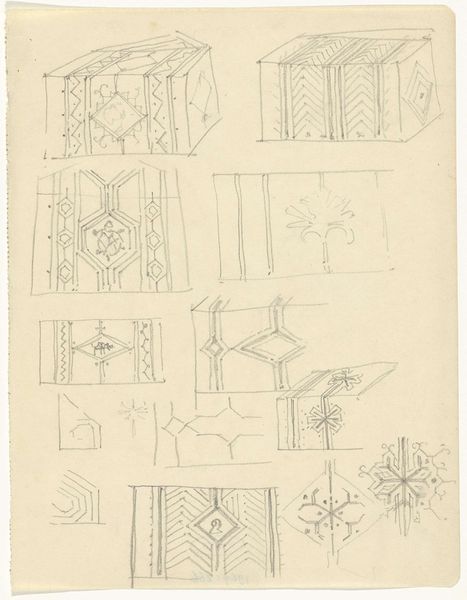
drawing, pencil
#
drawing
#
comic strip sketch
#
quirky sketch
#
arts-&-crafts-movement
#
old engraving style
#
personal sketchbook
#
sketchwork
#
ink drawing experimentation
#
geometric
#
pen-ink sketch
#
pencil
#
sketchbook drawing
#
storyboard and sketchbook work
#
sketchbook art
Dimensions: height 215 mm, width 165 mm
Copyright: Rijks Museum: Open Domain
Curator: Here we have Gerrit Willem Dijsselhof's "Ornamentontwerpen op blokken," a drawing made sometime between 1876 and 1924, housed right here at the Rijksmuseum. Editor: My first thought is 'diagram'. There's a beautiful precision to these pencil lines, a real feeling of meticulous design in the making. Curator: Absolutely. Dijsselhof was deeply involved in the Arts and Crafts movement, and this work really exemplifies the movement’s emphasis on handcraftsmanship and design. What strikes me is how these geometric shapes and patterns, meant for ornamentation, speak to the era's social ideals. Editor: I see that, definitely. You can almost feel the artist wrestling with materials, imagining how these sketches translate into a tangible, crafted object. The shading within the central diamond suggests carving. I'm curious, what kind of blocks was Dijsselhof designing for, specifically? Was he working with textiles, furniture... ? Curator: His designs ranged widely. Dijsselhof aimed to integrate art into all aspects of daily life. The intention of crafting beauty into even mundane things was key to his and the Arts and Crafts movement's goals. Think of wallpaper, ceramics, furniture embellishments—surrounding oneself with well-made and beautiful things. Editor: That connection to the everyday is palpable. You get a sense that he's deeply involved with the production process here. There's no separation between design and labor in this sketch, is there? And that aesthetic carries certain political implications. Curator: Precisely. This kind of art rejects mass production, favoring instead artisanal skills. It's a statement, consciously or unconsciously, against the dehumanizing effects of industrialization. These were objects *made*, not simply produced. Editor: Looking closely, you see corrections and alterations, traces of his thinking. The act of creation is laid bare on the page, highlighting his physical effort. It almost romanticizes labor through decorative design. Curator: Exactly. Even in a sketch, it shows how this ornamentation has profound social and philosophical dimensions. It invites us to think about the value we place on handiwork versus machine-made goods. Editor: Examining the marks on the page allows you to truly envision the labor that would go into transforming the drawing into the final decorative object. A sketch doesn't just prefigure the artwork, it encodes the human process behind it. Curator: It's fascinating to view even preparatory sketches through this lens, giving these ‘ornament designs’ profound layers of context and meaning. Editor: It has definitely changed my appreciation of these sketches! I can now better understand how art production intertwines art, labor, and socio-economic concerns.
Comments
No comments
Be the first to comment and join the conversation on the ultimate creative platform.
